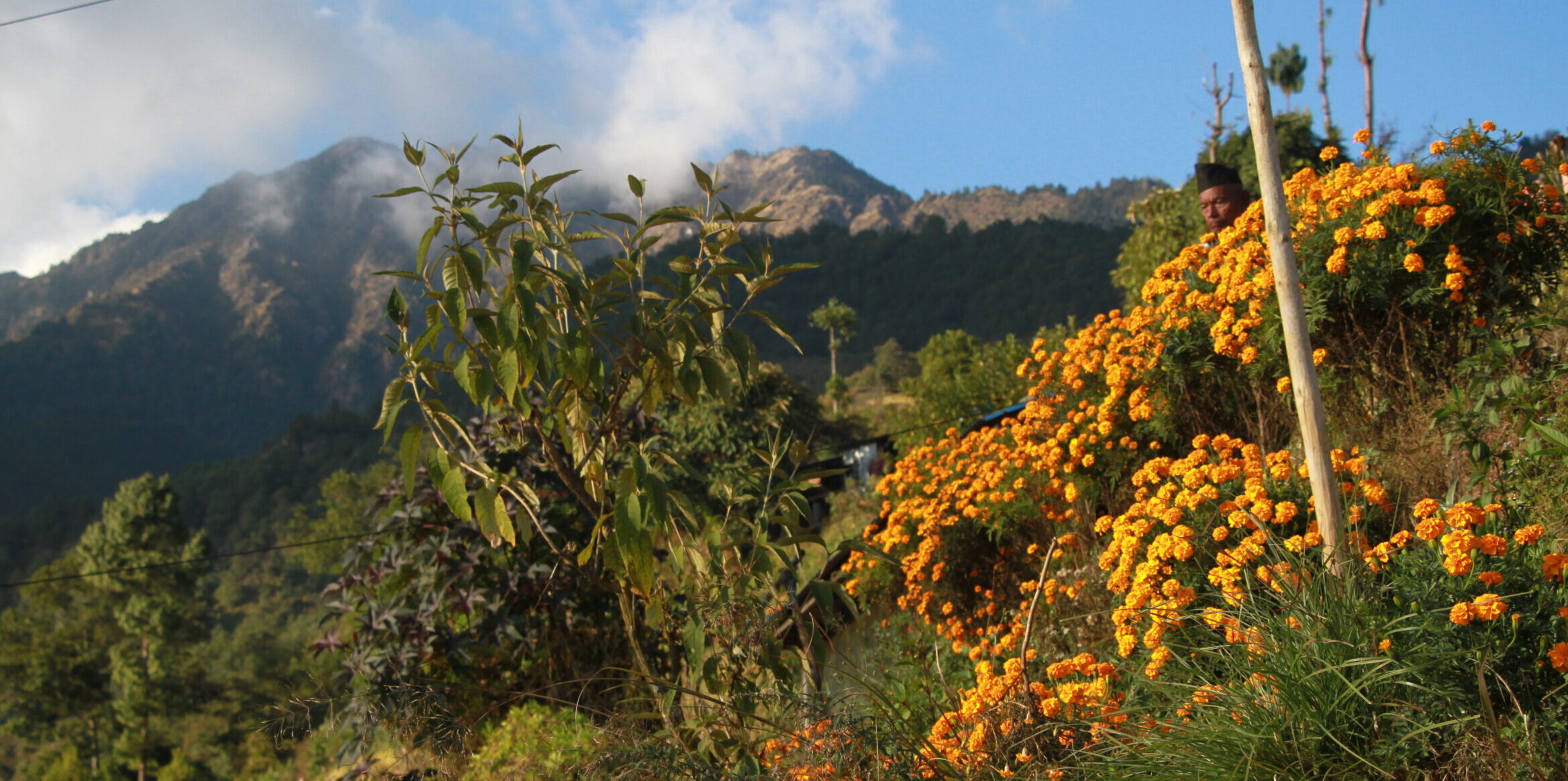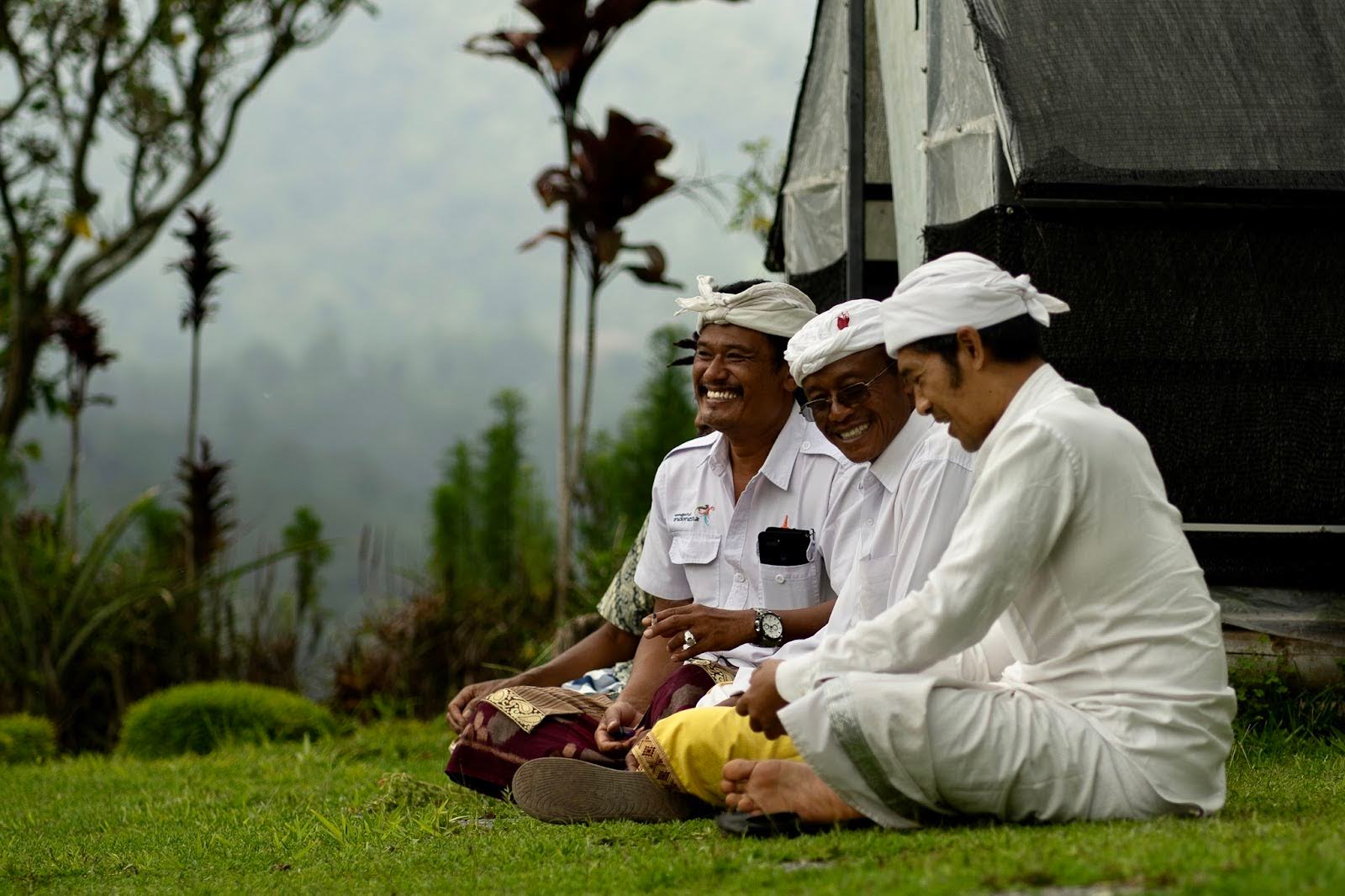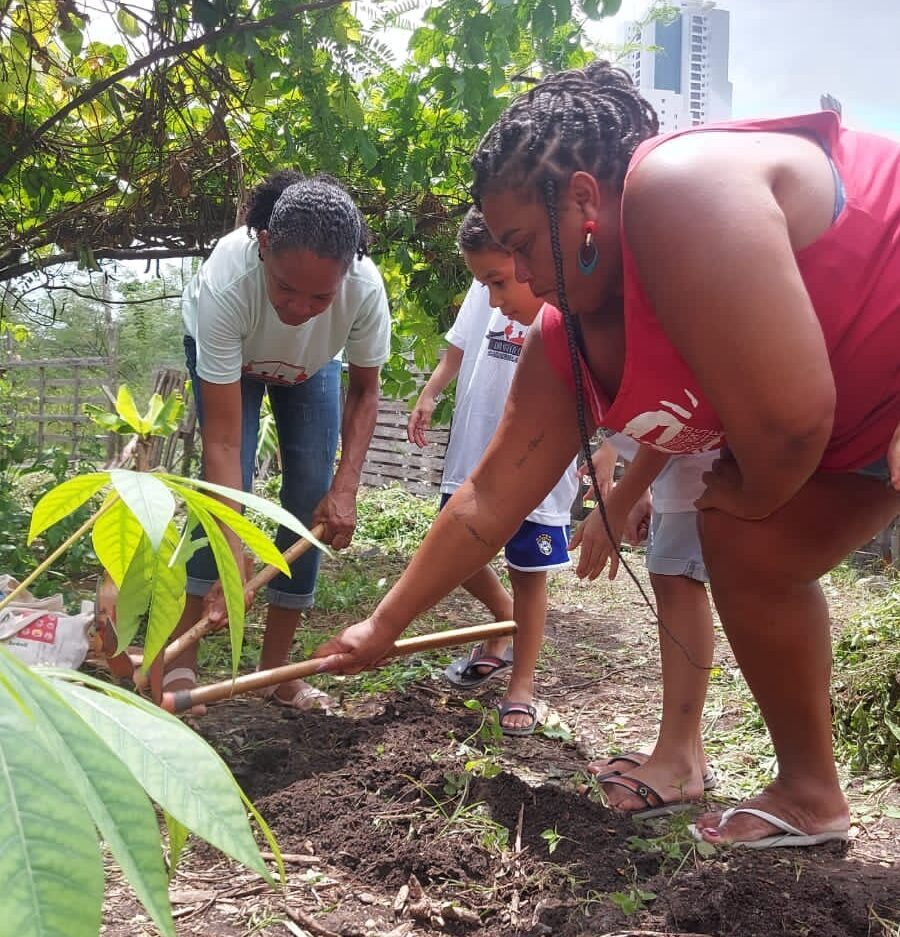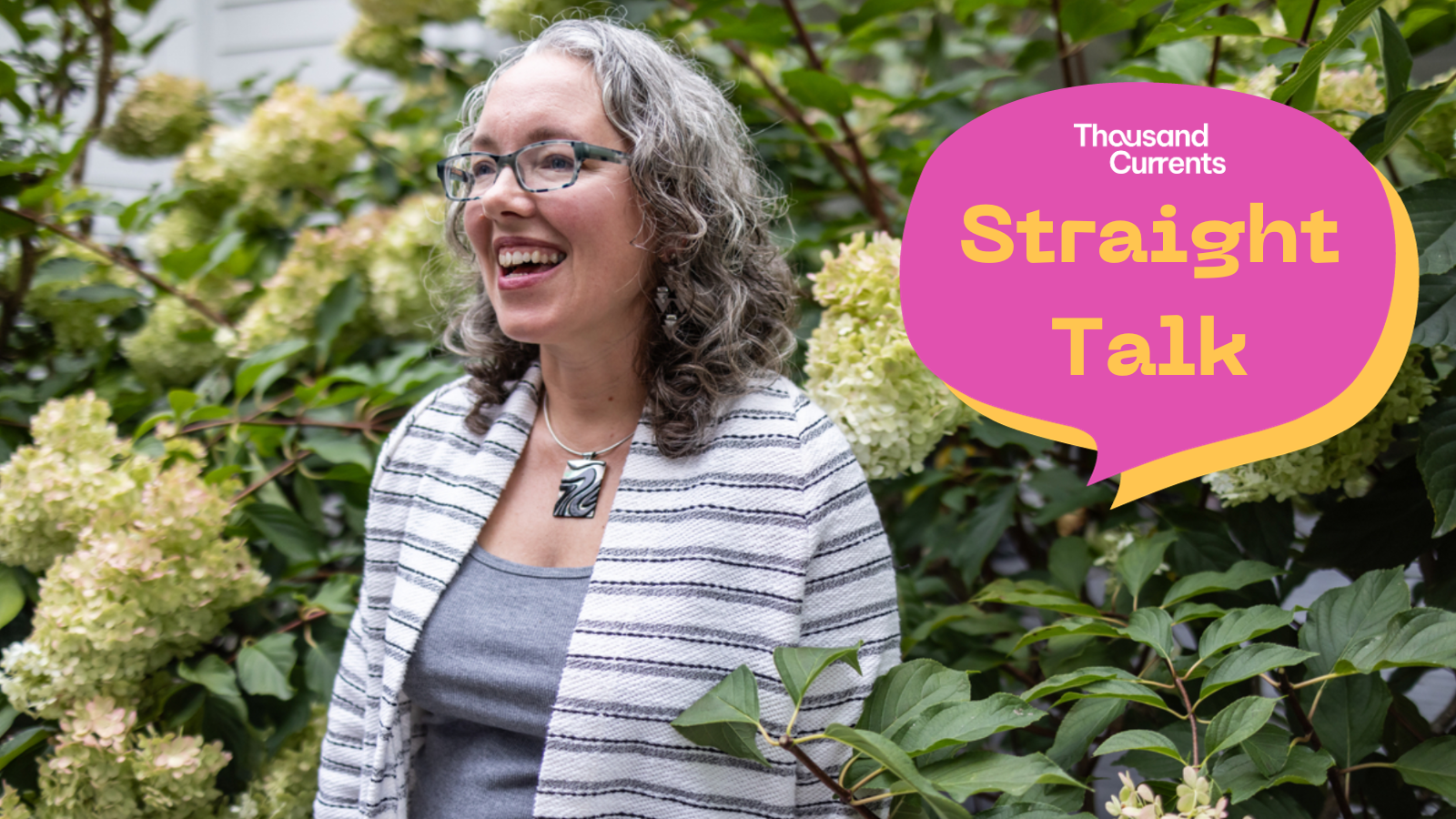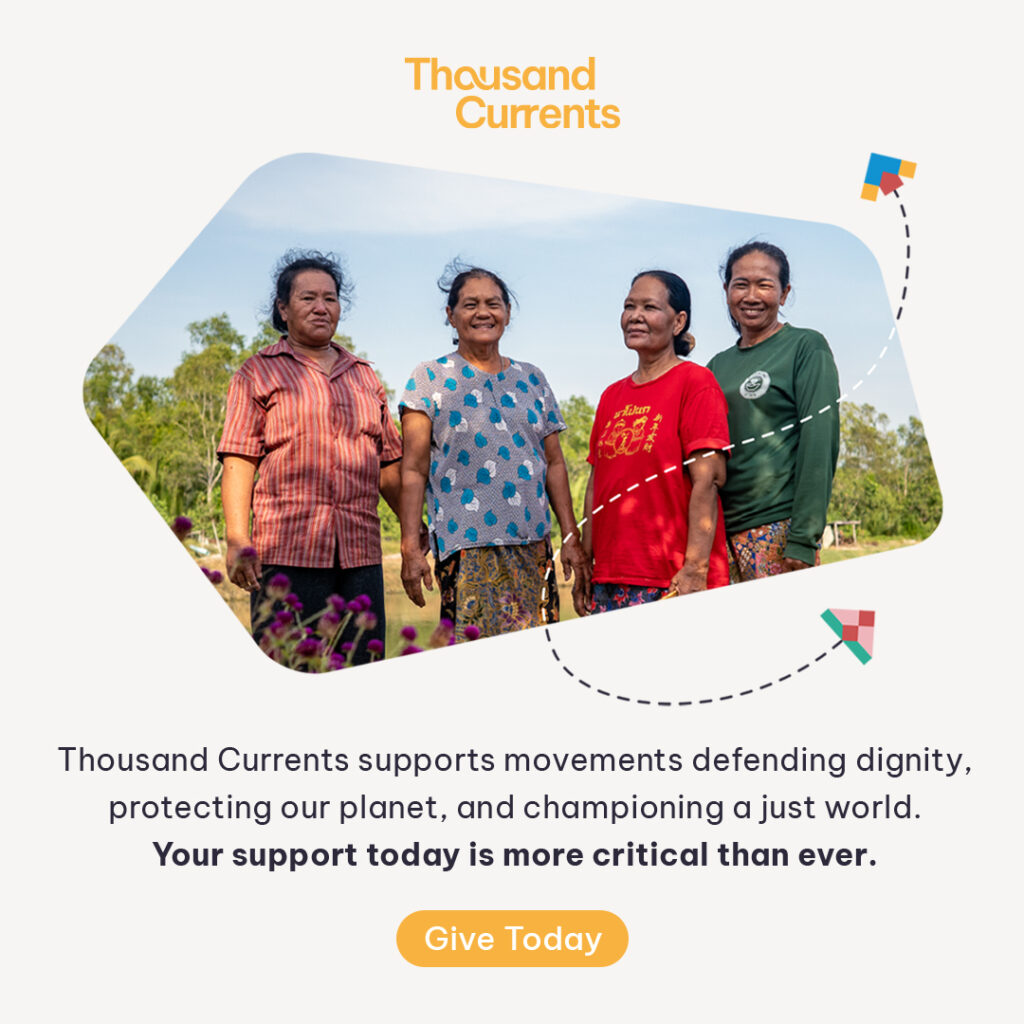One idea ran deep in all aspects of the learning exchange: “from the bottom and to the left.”
It is a foundational concept at the heart of powerful organizing and collective knowledge building. And it was at the center of everything that Thousand Currents former partner, Desarrollo Económico y Social de los Mexicanos Indígenas (Social Economic Development of Indigenous Mexicans, DESMI) did as host of the learning exchange on agroecology and food sovereignty in Chiapas, Mexico.
From the accommodations – we were hosted at CODIMUJ, a women-run space with its roots in Liberation Theology – to the agenda that allowed space for us to think, strategize, dream, and celebrate collectively; DESMI ensured discussions were centered on and decisions were made “from the bottom and to the left.” Some days required us to discuss at length the importance of respecting women in all aspects, beyond food systems. One night, participants from each region stayed up late drafting a declaration voicing our dreams for self-determined and sustainable communities. Another night, we had a talent show where we shared traditional songs and dances.
“From the bottom and to the left” wasn’t linear. It took long hours, and it was messy. At the core of everything was a liberating synergy of spirit, theory, and practice that propelled us forward.
So what did this look like?
Spirit
On the first morning, participants were invited to join the mystica, a ceremony rooted in Mayan tradition. As we all surrounded the Mayan altar, together we greeted the four cardinal points (North, South, East, West), gave thanks for the abundance of the earth, and grounded our intentions for our time spent together. Each day after that, other participants from different cultures were invited to lead a mystica fashioned after their traditions and spiritual practices.
This cultural exchange of tradition and ceremony gave all of us another piece of information to consider as we committed to talking through strategies for healthy sustainable and autonomous communities rooted in Buen Vivir. This cultural knowledge also allowed us to see each other a little more complete, a little more whole. Even if you didn’t subscribe to a spiritual practice, knowing the way your neighbor relates to the land was vital to understanding and trusting them and their approach to the work for food sovereignty.
During a discussion about transnational agriculture companies, one young Indigenous leader made a point to distinguish Indigenous practices from non-Indigenous. They explained that some small scale farmers still have “an extractivist mentality; Indigenous [people] are those who have a worldview that enables you to see the earth as Mother and whose work involves making payment, making ceremonies.” In a room full of allies, activists, and non-Indigenous practitioners, it was important to name that spirit is integral to the way Indigenous peoples steward the land if we were truly building a future for all of us.
Western models of analysis and knowledge-sharing center on the idea that if you isolate a problem, you can more clearly focus on it, and therefore solve it. That means I lose many folks when I speak about any kind of spiritual practice. Many western approaches dismiss spiritual, emotional, and psychological factors as “fluff” that is irrelevant to solving the issue. At the exchange this “fluff” was foundational. The mysticas were never intended to be the all powerful guiding force that would magically guide us to solutions; instead they served to shift our disposition when entering a theoretical plane.
Theory
The spiritual sharing at the learning exchange constructed a layered approach that stretched and challenged us to be mindful of each other while entering the mind space of theory. After feeding the spirit in mystica, we transitioned to coyuntura.
In Latin America, there has been a long academic tradition of coyuntura, a format of political and historical analysis where incidents, context, actors, and the power relations among those factors help us make sense of a given period of time. This knowledge-sharing format and how the information was structured makes clear that the players within any given situation are influenced and impacted by a multitude of moving parts and to differing degrees.
First participants from each of the 11 countries represented summarized their political, social, and economic realities, giving examples of when these intersected. This process took 4+ hours of sharing. It was a long, slow, and rigorous process. The information allowed the group to move beyond silver bullet solutions to more nuanced and specific commentary.
Once participants identified parallels in their struggles, conversations sparked:
“How are you organizing in Honduras to reclaim land?”
“How did the government subsidies in Nepal work for farmers?”
“Why have you chosen to work with families instead of just women and children?”
The deeper participants leaned into the coyuntura, the more nuanced the conversations became. People were connecting on more specific, interrelated, and deeper topics rather than having only a focus on agroecology. Women spoke about the added challenges of lower pay, sexual abuse, and motherhood while working in agriculture. Young people added the need to inspire the youth to carry the torch for the elders, asking “Who will steward the land after you?”
The theoretical approach of coyuntura is intersectional by design. Layer upon layer, alliances were born, strategies shared, and solidarity enacted.
Practice
On the fourth day of the exchange, we held a mini-fair and skillshare workshops. The space was converted into a working lab and market. Participants traded seeds and sold their artisanal crafts – alternative economies at work. Agroecologists shared techniques on egg porosity, soil health, and much more. One participant shared his technique of farming in a Mandala shape rather than straight rows. Soon after we returned home, we found that a Guatemalan partner had already implemented the technique in her community.
After all the trust building through spirit, after the theory and strategic food for thought, participants shared what all that the learning exchange amounted to: real usable knowledge people could use to feed their communities, value the labor of women, prove the strength of youth organizing, and much more.
It was clear that when we start “from the bottom and to left”, we build movements that carry all of us.

